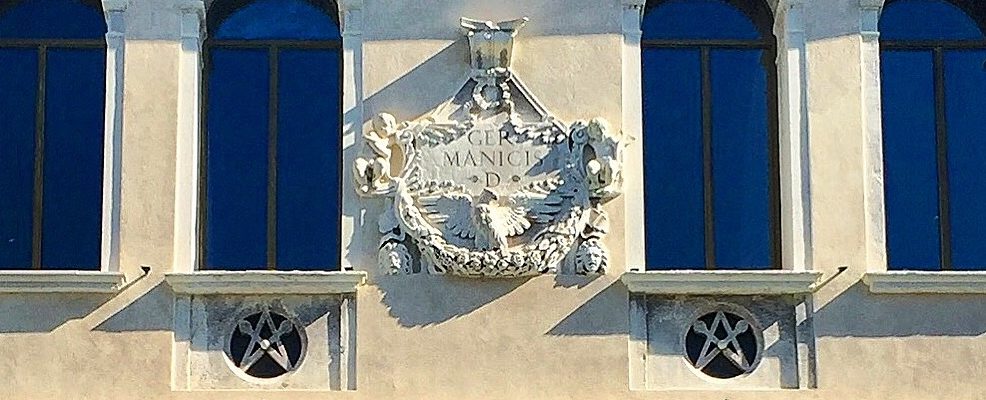A Mall with a History: the Fondaco dei Tedeschi in Venice
On October 1st, 2016, the Fondaco dei Tedeschi in Venice reopened to the public after a long closure and a much-discussed restoration.
Now a luxury shopping mall, in the previous centuries the building was used by the customs agency, the fiscal police, and finally the post office.
But what was the fondaco originally? Who used to live and work there when it belonged to the Serenissima?

From the Funduq to the Fontego.
The Arab word funduq (from the Greek pandokeion, meaning “inn”) referred to a place where foreign merchants lived and worked. Beginning in the Middle Ages, Venetians had funduqs in many middle-eastern cities, such as Constantinople and Alexandria.
Such a system seemed so convenient that the Venetian government established fontegos (the local version of the word) for several different communities of foreign merchants in the city.
The most important were those for the Persians (near Rialto), the Turks (Palazzo Pesaro, now the Museum of Natural History) and especially the one for the Germans.

The House of the Germans
The first document which mentions a fondaco for the German merchants is dated 1225, and indicates that it was in the same location then as it is today: next to the Rialto bridge, the financial centre of Venice.
The present building was built in the early XVI century, as in 1505 a big fire destroyed the previous structure.
The fondaco was designed by a certain “Hieronymus Todescho”, literally meaning “Jerome the German”, that some have even identified with the famous painter Jheronimus Bosch¹!
Even if a German was responsible for the general plan, the government of the Serenissima then appointed their official architect, Antonio Scarpagnino, manager of the works.
The external decoration of the building was also entrusted to two local painters: Giorgione da Castelfranco and Tiziano Vecellio. Unfortunately, only a few fragments remain of the gorgeous frescoes that used to cover the facade and the sides of the prestigious building.

Business rules
Not all the Germans in town had to live in the fondaco, only the merchants. Anyone arriving in Venice from the territories of the Holy Roman Empire with goods to trade had to be taken there: in that building they would find a room (the structure normally hosted around 100 merchants), and their goods would be checked and stocked.
Business inside the fondaco was strictly regulated by the Venetian Republic: the German merchants had to trade only with Venetians, not other foreigners. Every one of them, on their arrival, was assigned to a messetta or sensale, a middleman whose job was to assist them and work as an interpreter. This job was so profitable that sometimes the Republic would reward some of its most appreciated artists with the privilege of working as a sensale, as was the case with Titian and Gentile Bellini.


Above: the bellower of the Church of San Bartolomeo, where the German community used to meet.
Below: the Church of Santi Giovanni e Paolo, where some of the German merchants were buried.

Traces of the merchants
If we look very carefully at the columns on the different levels of the fondaco, we can find many symbols painted or engraved on the surface of the white stone. These marks are the logos of the different merchants who used to occupy those spaces.
Even on the facade overlooking the Grand Canal, we can see some decorations which are probably the symbols of two of the most important guests of the fondaco: the Fuggers (whose shield was a lily flower) and Anton Kolb (represented by a stylized letter “A” drawn with maces—kolben means “mace” in German)².

As you can see, the Fondaco dei Tedeschi is not merely a shopping centre, but a place with a rich history to discover, and we are eager to share it with you!
Notes
¹ Gloria Vallese, The owl on the branch of pearls. Notes for Bosch in Venice.
https://www.academia.edu/10613785/The_owl_on_the_branch_of_pearls_._Notes_for_Bosch_in_Venice
² Ferdy Hermes Barbon, I segni dei mercanti al Fondaco dei Tedeschi.
https://www.academia.edu/12822511/I_SEGNI_DEI_MERCANTI_AL_FONDACO_DEI_TEDESCHI

